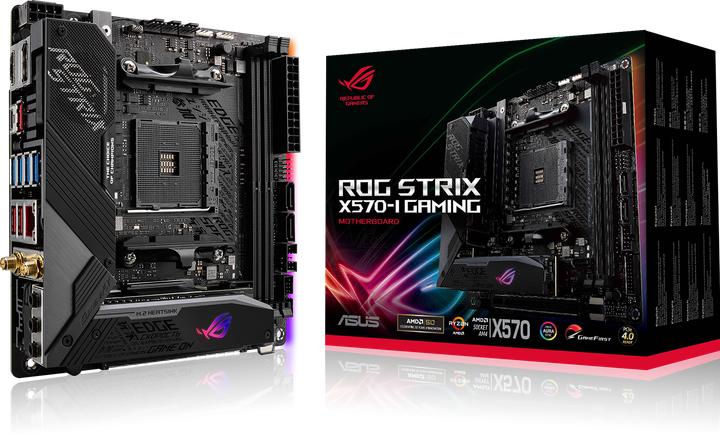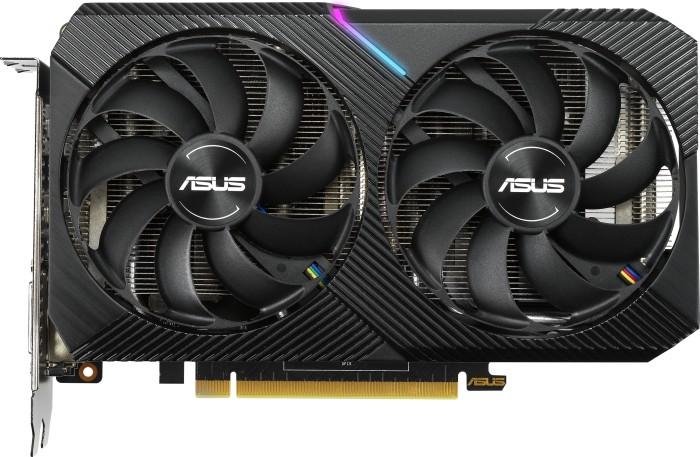

An enclosure with corners and, above all, edges: Kolink Rocket
The Rocket from Kolink is a Dan Cases A4 clone. With a volume of 9.6 litres, the case is extremely compact and fits on any desk. Only the maximum CPU cooler height prevents the case from accommodating high-end components.
Ouch - and my finger is already bleeding. I slip while mounting the mainboard and get a flesh wound on the sharp edges of the rocket. This brings back memories of long-forgotten times when I started building PCs. On the outside, the Rocket makes a good trap.
The brushed aluminium look and the rounded front edges make the Rocket look sleek. Evil tongues would say it looks like the Dan Cases A4-SFX V4.1. Kolink has definitely taken inspiration from this for the Rocket. However, thanks to the gap at the front and top of the sides, the manufacturer has given the case its own twist. At 125×235×328 millimetres (W×H×D), it is also slightly larger than the Dan Cases A4-SFX V4.1, which only has a volume of 7.25 litres.
- Dimensions: 125×235×328 millimetres
- Weight: 3.5 kilograms
- Sandwich design with one chamber for the mainboard and one for the graphics card
- Supported motherboards: Mini-ITX (all sockets from AMD & Intel)
- Supports dual-slot gaming graphics cards with a length of up to 310 millimetres
- SFX or SFX-L power supplies and two 2.5-inch data carriers
- Space for CPU coolers with a maximum height of 54 millimetres
- Two USB-A 3.0 front ports

A first look
At first glance, the Rocket looks well made. On closer inspection, however, I notice that the edges are very sharp. You could cut bread with it.

The mesh side panels can be removed with four screws each. Dust filters are missing on both sides. Once the side panels are removed, the graphics card chamber is located on the left and the mainboard chamber on the right. There is very little space in the mainboard compartment. Your fan must therefore definitely not protrude beyond the board. The riser cable, which connects the mainboard to the graphics card, is routed underneath the mainboard. There is an 80-millimetre fan at the top, which transports hot air out of the case through the gap at the top.

I attach the power supply unit to the top front with a bracket. This makes the PSU's power switch difficult to access inside the housing. So I have to remember to press it before screwing the housing shut. To ensure that the power connection is still at the back, Kolink runs a power cable through the case to the rear. Two 2.5-inch drives can be mounted on another bracket underneath the power supply unit.

The installation
For the test I use as in my review of the Osmi 3.1 the NH-L9a CPU cooler from Noctua. I recently added the Big Shuriken 3 from Scythe to my new mini-ITX CPU cooler, but with its height of 69 millimetres, it unfortunately doesn't fit into the case. This time, I adapted the CPU accordingly and installed a Ryzen 5 3600XT. These are the other components:
As always, I prepare the mainboard outside the case. This time I also connect all the cables outside the case if possible. The cables for the front connections are long enough for this. Connecting the riser cable is a little awkward. On the one hand, it is too short to connect it next to the housing, and on the other hand, it is too long to stow away properly once it is connected. With a little patience, it still works quite well. What I do notice, however: The riser cable almost completely covers the fan. Does it still work efficiently like this?

Next, I mount the power supply unit, which works without any problems. The cables come out at the bottom, which blocks the 2.5-inch brackets somewhat. Fortunately, I'm installing an M.2, but I can imagine that the space for 2.5-inch drives is a bit unfortunate with all the cables. Cable clutter is inevitable.

Finally, I install the graphics card. It quickly disappears into the slot, but I can't screw it into the thread provided for it. The mounting hole on the housing is not flush with the mounting hole on the graphics card. I do have some play, but not enough to position the holes on top of each other. For better or worse, I'll have to do without screwing it on for the test. Maybe I got an off-the-shelf model, because I can't find anyone on the internet who has the same problem as me.

Except for the graphics card, which can't be fixed properly, the assembly works quite well and is done quickly. I then have to find out for myself that the edges are sharp when installing the graphics card: I slipped and scraped my finger bloody. This brings back memories of cases from the 90s.
Test setup and method
The most important thing about a case is the airflow. In other words, how efficiently is fresh air transported into and out of the case? To test this, I subject the components installed in the case to the HeavyLoad (for the CPU) and FurMark (for the GPU) stress tests.
I run the stress tests for 20 minutes. I use HWiNFO64 to measure the temperature of the CPU, GPU, SSD, motherboard and chipset. Unfortunately, I can't provide any information on the VRM, as the sensor is apparently missing here. At least HWiNFO doesn't give me any values. I do the test in my home office. The room temperature is 24° Celsius before the test and 24.2° Celsius after twenty minutes. I leave the fan control set to standard in the BIOS. I note the temperatures after every two minutes.
The results
During assembly, I particularly noticed the unfortunate positioning of the exhaust fan. It is almost completely smothered by the riser cable, which lies directly above it. As the test shows, this is not the only problem: the part is extremely loud. With my dB meter, I measured 62 dB from a distance of 30 centimetres from the housing. That's about as loud as my wife's old Bernina sewing machine and is mainly due to this fan.

The Ryzen 5 3600XT reaches its thermal limit of 95° Celsius after 14 minutes. However, the clock rate does not drop drastically for the remaining six minutes of the test: If the CPU is still clocked at 3843 MHz after 14 minutes, it is still 3793 MHz after twenty minutes.
The graphics card reaches 80° Celsius after just four minutes. During the remaining 16 minutes of the test, the temperature only increases by 3° Celsius. The temperature has no influence on the card's clock rate.
Compared to the Osmi 3.1, the chipset and the mainboard in the Rocket are hotter. At a maximum of 81° Celsius, the chipset in the Rocket runs 7° Celsius warmer than in the Osmi. The difference for the mainboard is also 7° Celsius: 62° compared to 55° Celsius. The SSD, on the other hand, remains two degrees cooler in the Rocket at 60° Celsius.
How do these differences come about? The Osmi has a more open design than the Rocket and vents towards the top. In addition, the Osmi probably allows more fresh air to enter the case from below, which guarantees a better airflow over the mainboard and thus also the chipset. Due to the limitations of the graphics card, I was only able to install a GTX 1660 Super in the Osmi. The RTX 2070 that I installed in the Rocket gets much warmer. This has an effect on the overall temperature despite the dual-chamber system. This has less of an effect on the SSD because it is a few centimetres above the mainboard, i.e. further away from the chamber with the graphics card.

Conclusion: A case with rough edges
The Rocket is a great case if you don't want to install high-end components in it. The restrictions on the CPU cooler height are too great for you to install a decent cooler for large CPUs.
In contrast, you have more options for the graphics card. With a maximum length of 31 centimetres and a thickness of two slots, high-end cards are possible. Thanks to the mesh side panels, the graphics card fans can draw in enough fresh air to prevent the card from running too hot.
On the negative side, the outtake fan at the top makes a lot of noise. I would definitely change it right at the start. The good build quality is somewhat spoilt by the sharp edges.
At just under 160 francs, however, the Rocket is definitely a cheaper alternative to the Dan Cases A4-SFX V4.1. and well worth a look.
From big data to big brother, Cyborgs to Sci-Fi. All aspects of technology and society fascinate me.







